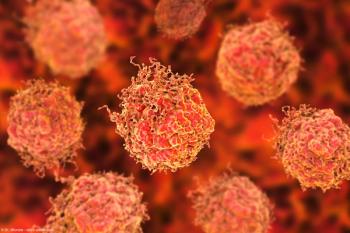
- Vol 47 No 10
- Volume 47
- Issue 10
Advocates work toward Office of Men’s Health
A renewed effort to establish a new Office of Men’s Health, which would improve coordination of initiatives throughout the federal government and improve education, awareness, and screening programs to improve men’s health, is now underway in Washington.

Khunatorn - stock.adobe.com



A renewed effort to establish a new Office of Men’s Health, which would improve coordination of initiatives throughout the federal government and improve education, awareness, and screening programs to improve men’s health, is now underway in Washington.
Led by the nonprofit Men’s Health Network (MHN), the initiative seeks to establish a new entity within the U.S. Department of Health and Human Services (HHS) to provide education and awareness of men’s unique health needs, including diseases such as testicular and prostate cancer.
“Establishing an Office of Men’s Health is vital to the support and promotion of messaging to men and their families,” said Ana Fadich-Tomsic, MHN’s vice president.
“We at MHN strive to provide free educational events and materials to communities across the country, so that every man has a fighting chance against prostate cancer,” she said. “Our outreach efforts could be greatly amplified with an established Office of Men’s Health to disseminate the information and provide recommendations for men to follow throughout the year, including Men’s Health Month and other awareness periods, similar to how the Office of Women’s Health supports Women’s Health Week and Breast Cancer Awareness Month.”
MHN seeks support of congressional caucus
Establishing an Office of Men’s Health within the federal government requires Congress to pass authorizing legislation, so Fadich-Tomsic said MHN has drafted a proposed bill and is seeking the support of the Congressional Men’s Health Caucus, co-chaired by Reps. Donald M. Payne, Jr. (D-NJ) and Markwayne Mullin (R-OK).
A spokesperson for Payne said his boss was “working with” MHN, but that the prospects for the enabling legislation needed to establish an Office of Men’s Health are unknown. Similar efforts have been made in previous years but have been unsuccessful. Both Payne and Mullin have been active supporters of MHN, participating in the organization’s annual workout events on Capitol Hill.
Also by Bob Gatty:
“We’ve been working with the Men’s Health Caucus to see if they’re interested in being a sponsor of the legislation,” Fadich-Tomsic said. “They have a lot going on, but we’re hopeful because we’ve been getting good responses.”
Representatives of MHN have been in touch with officials at HHS and the Centers for Medicare & Medicaid Services and have been told that they support the initiative if Congress approves the legislation.
“We’ve talked to all the different agencies, but not the White House as yet,” Fadich-Tomsic said, explaining that it is difficult to know who, exactly, to contact there. “So, we haven’t been able to sit down with the Trump administration. With the Obama administration, we had a dialogue on men’s health that we hosted. We brought in people from corporations and speakers to discuss why focusing on men’s health is important, how it benefits women’s health, and family health overall.”
In addition, she said MHN has contacted the governors of all 50 states, mayors of major cities, and other legislators urging them to support the legislative initiative.
“We work closely with the American Urological Association, and they participated in briefings with us,” she said. “They provided us with speakers and every year I attend their annual meeting and sit on their panels. Also, I work with the Urology Care Foundation, as well as LUGPA and the American Society for Men’s Health.”
Next:
The draft legislation, which has yet to be introduced, is called the “Men’s Health Awareness and Improvement Act.” Among key points made in the bill:
• Risks to the health and well-being of men and their families are on the rise because of a lack of education on, awareness of, and pursuit of preventive screening and care.
• It is a health crisis that is also a concern for women regarding their fathers, husbands, sons, and brothers.
• The U.S. Census Bureau predicts that in 2020, 45% of people age 65 and over will be men and 55% will be women, a marked decline in the male population.
• Men’s health is a concern to government, which must absorb the high costs of premature death and disability, including the cost of caring for dependents.
• Educating men, their families, and health care providers about the importance of early detection of men’s health issues can result in reducing mortality rates and improving health and the nation’s overall economic well-being.
• Of concern is the physical, mental, and emotional well-being of military men (and women) returning from war zones and the country’s veterans.
• According to the National Cancer Institute, cancer mortality is markedly higher among men than women.
• Prostate cancer is the most frequently diagnosed cancer among men, with nearly 165,000 diagnosed this year alone and almost 30,000 facing death.
Read:
According to the bill, the Office of Men’s Health would be headed by a director appointed by the HHS secretary. It would conduct, support, coordinate, and promote programs and activities to improve the state of men’s health in the U.S. and consult with HHS offices and agencies to coordinate public awareness, education, and screening programs and activities relating to men’s health. Emphasis would be on colorectal and prostate cancer, diabetes, cholesterol, and mental health screening programs for men identified as being at increased risk of developing such conditions and diseases.
Establishing the new Office of Men’s Health would build upon the success of the Office of Women’s Health, according to Fadich-Tomsic.
“We’re trying to show this would not take away from Office of Women’s Health,” she explained. “We’re trying to make it an even playing field.”
Articles in this issue
about 6 years ago
Opioid prescribing varies widely among urologistsabout 6 years ago
Teleurology: The time has arrivedabout 6 years ago
New recurrent UTI guideline: What urologists need to knowabout 6 years ago
Model highlights cost savings of single-stage SNMabout 6 years ago
Testosterone: A panacea for incontinence patients?about 6 years ago
Low testosterone, incontinence may be linked in older womenabout 6 years ago
Positive dipstick does not preclude BTX injectionsabout 6 years ago
ADT may increase likelihood of urethral atrophyabout 6 years ago
How has your management of BPH patients changed?Newsletter
Stay current with the latest urology news and practice-changing insights — sign up now for the essential updates every urologist needs.




















